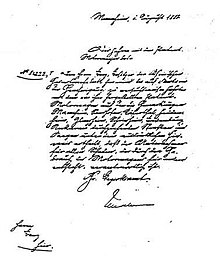Driving license


A driver's license or driver's license is an official certificate that proves the existence of a driving license to drive certain vehicles on public traffic .
In Germany one includes license information on the granting of a license in Austria to grant a steering [he] authorization . In Switzerland , the name of this document is driving license (colloquially ticket , billet or Permis ), it shows the driver authorization to.
By contrast, is driving , steering [he] authorization or driving authorization an administrative act, that is the official license to drive motor vehicles (Switzerland: motor vehicles ) on public roads, paths and squares. It is tied to a specific type of vehicle - the vehicle class: Anyone who is authorized for a class has the right to drive a vehicle of this class. It is issued by the competent authority and is linked to the fitness to drive and proof of competence in the form of a driving test ( Swiss High German : Führerprüfung ), in Germany according to the Road Traffic Act (StVG) and the Driving License Ordinance (FeV), in Austria according to the Motor Vehicle Act (KFG) and the Driving License Act (FSG) and in Switzerland according to the Road Traffic Act (SVG) and the Traffic Licensing Ordinance (VZV).
General, history
The history of the driving license goes back to the end of the 19th century. The concept of a driving license - like a driver's license - has been around since 1888 ( Prussia ). Occasionally, a permit from the city of Paris to drive on its public roads, issued in July 1888 to the automobile pioneer and steam engine designer Léon Serpollet , is referred to as the world's first “driver's license”. There was an official examination for the first time in Vienna in 1901 (see VdTÜV exhibition "Driving licenses in Europe"). In the GDR , the driver's license was sometimes referred to as a driving license .
The around 110 different driving license models within the European Economic Area (EEA) have been replaced by the uniform European driving license in credit card format since January 19, 2013 according to current EU law . Since this date, only this may be issued for the new issue. Old driving licenses have transition periods; However, the member states of the EEA must ensure that by January 19, 2033, all driving licenses issued or in circulation meet all requirements of the current European Driving License Directive.
Regulations in different countries
- EU law (applicable in the EU, in the EEA countries and Switzerland): Driving license (EU law)
- For special regulations in Germany, see: Driving license and driving license (Germany)
- For special regulations in Austria, see: Driving license and driving license (Austria)
- For special regulations in Switzerland, see: Driver's license and driving license (Switzerland)
- For special regulations in the USA, see: Driver's license (United States)
Minimum age for a car driver's license
The minimum age for a driver's license for passenger cars, the so-called “car driving license” or “car driving license”, is often compared internationally.
In most countries of the world, unaccompanied, unrestricted driving is possible from the age of 18. In some countries, there are regulations for restricted driving licenses, especially for driving when accompanied by a driver under the age of 18, sometimes excluding night driving, depending on the state. Unrestricted car driving is possible in 23 states of the USA from the age of 16, and in three states with restrictions from the age of 15.
The starting age for a driver's license in the other classic immigration countries of Canada , Australia and New Zealand is similarly low, but with requirements for the driver .
Driving without a license
When driving a motor vehicle on public traffic , the required driver's license must be carried. Additional certificates of competence are also required for journeys in the military, in rescue transport, for dangerous goods or heavy transports, in the taxi or rental car industry.
Not having a driver's license with you is a traffic offense in many countries . Not having the appropriate driver's license can be punished more severely. Not owning it can be based on never having passed the relevant tests or having your driving license revoked . Driving licenses can be withdrawn because of traffic or other offenses, can also be removed immediately because of heavy alcoholism and can also be handed over again after sobering up.
It is not necessary to have a driver's license to register a motor vehicle in person. The vehicle must then be driven by another person.
Driving without a license
Anyone who drives a vehicle without a driver's license (the driver's license may, however, be forgotten or lost) is violating insurance regulations, which is why the insurance company can reclaim its liability from the driver or be exempt from a comprehensive insurance policy.
For the situation in Germany, see: Driving license and driving license (Germany) #Drive without a license and drive without a license
International driving licence
The international driving license (also: interstate driving license ) is a temporary and globally valid additional document to the national driving license, but it is only required relatively rarely. The document contains all data of the normal driver's license in different languages and is only valid in combination with this.
See also
Web links
References and comments
- ↑ Road Traffic Act § 2 Paragraph 1. dejure.org
- ↑ Section 4, Paragraph 2 of the Driving License Ordinance, accessed on April 14, 2019
- ↑ a b Note .: In the Austrian legal materials, even within a single law, both coming driving license ( Request link in RIS ) and driving license ( Request link before).
- ^ Serpollet, à tout vapeur . gazoline.com
- ^ Driving licenses in Europe History of driving licenses.
- ↑ Directive 2006/126 / EC (PDF) (Driving License Directive ).
- ↑ Brief information on the international driver's license


